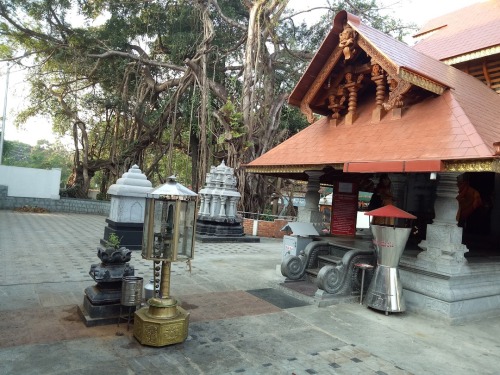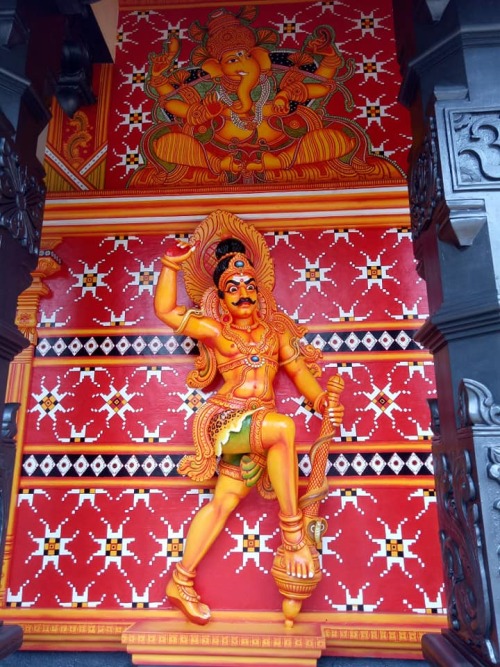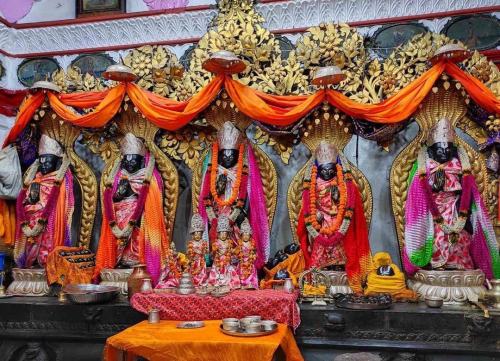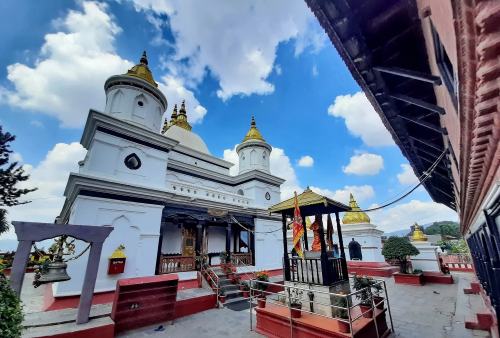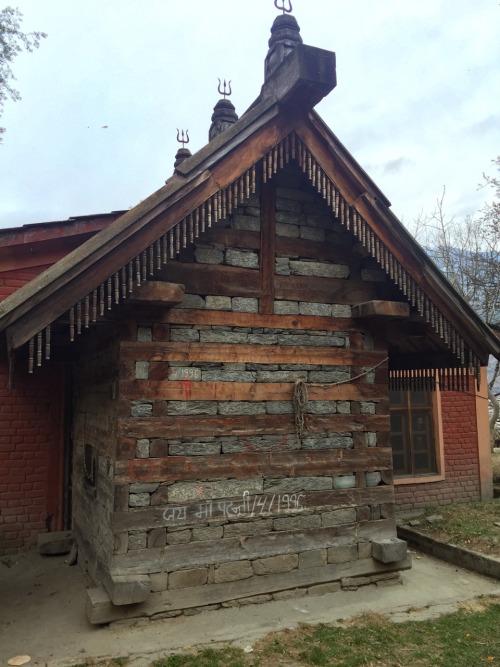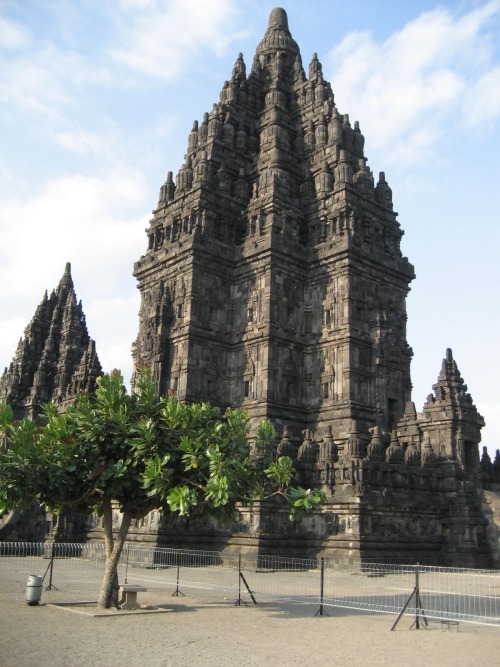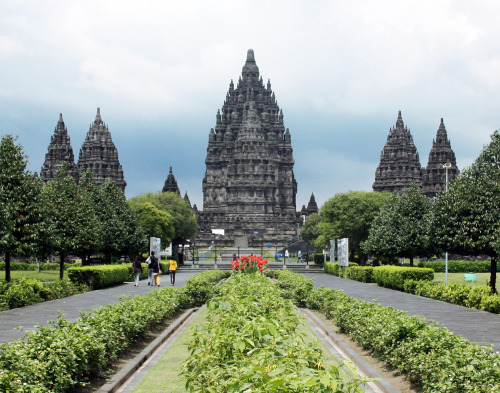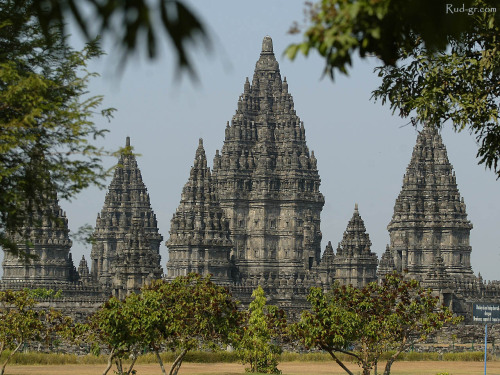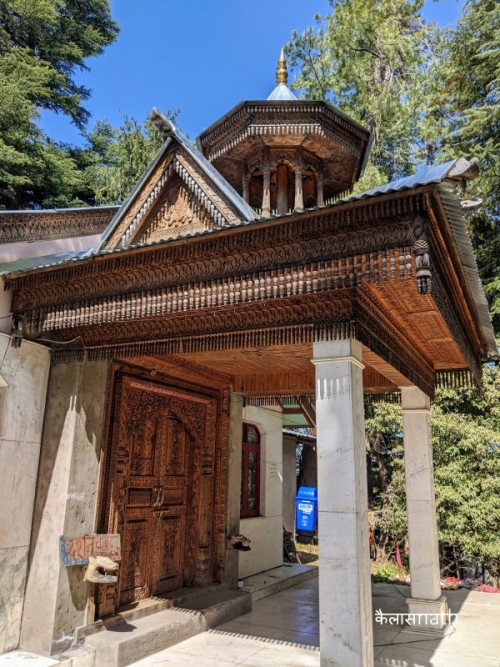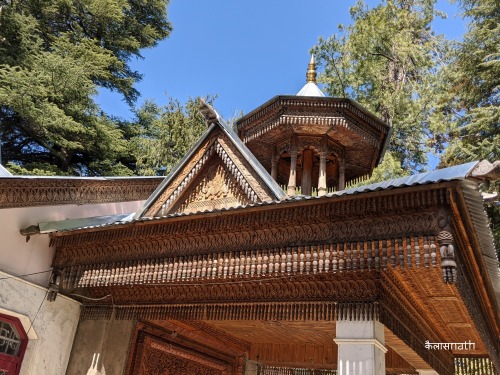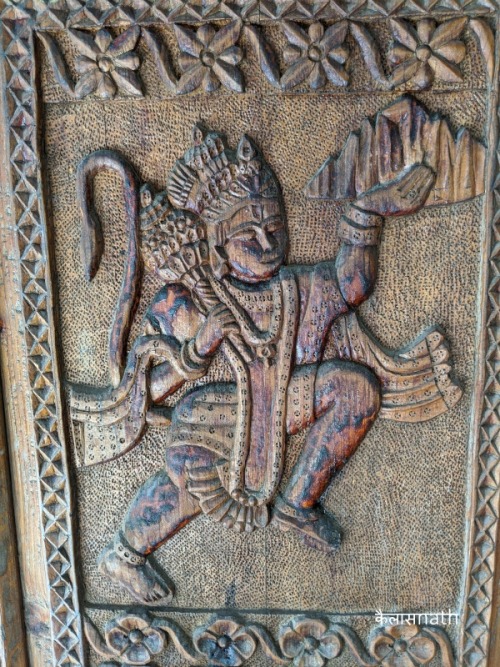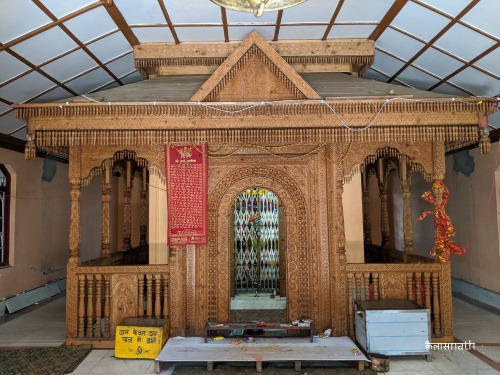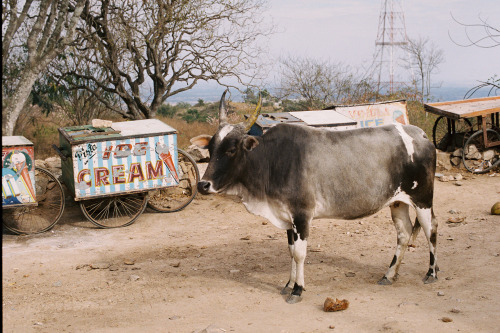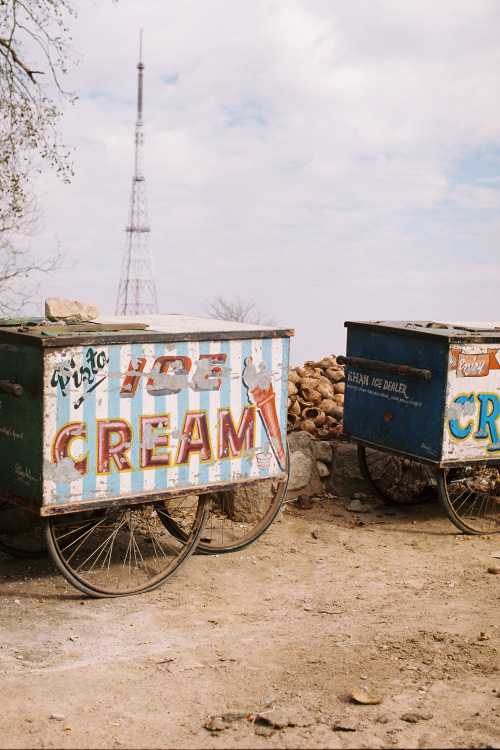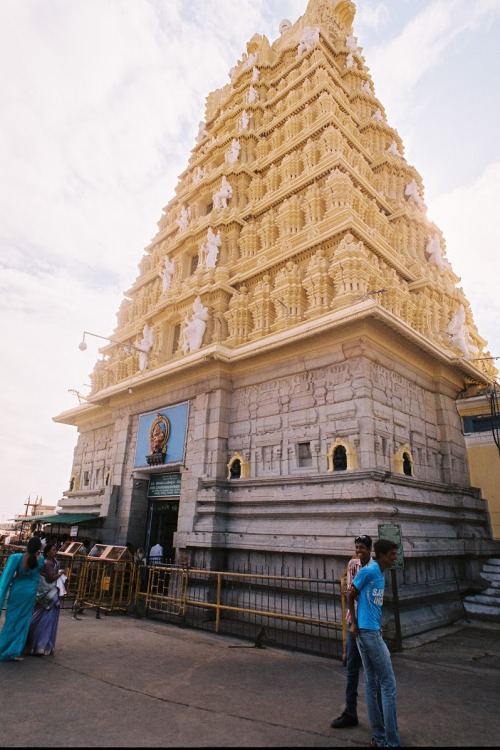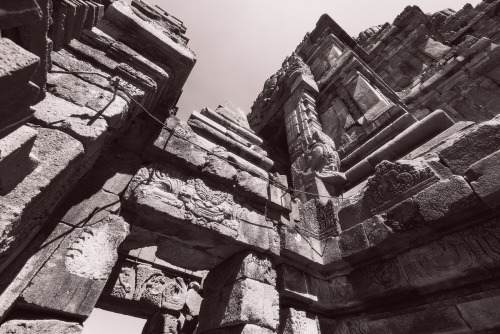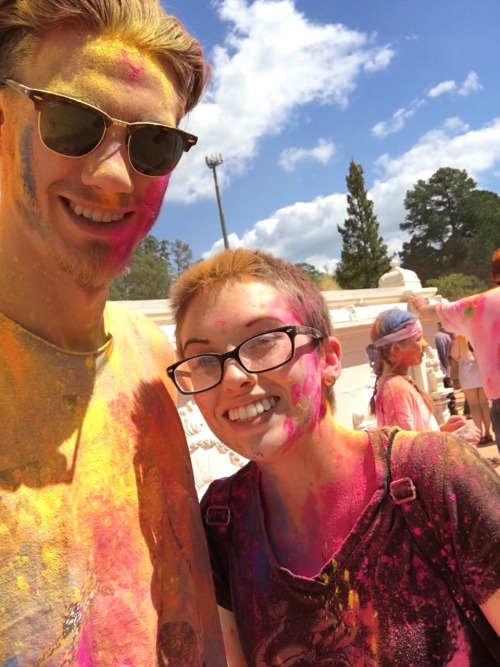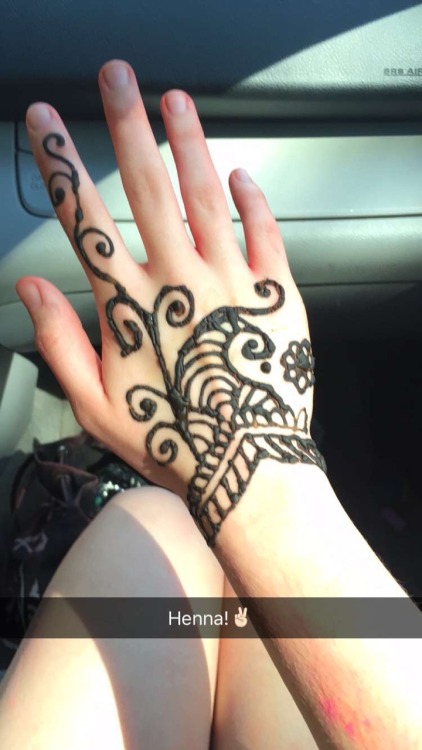#hindu temple
Temple gate and dwarapalakas (gate guardians), paintings and photos by Tharun Vasudevan, Kerala
Post link
Prambanan Temple. Built in 9th century Indonesia and dedicated to the Hindu trinity of Brahma Vishnu and Shiva.
Post link
A traditional temple dedicated to Lord Śṛī Viṣṇu in the pañcāyatana style – a set of five temples with the large central shrine of the chief deity surrounded by four smaller temples dedicated to other deities – Gaṇeśa,Śaktī,SūryaandŚiva. Nearby rock edicts place these temples around later part of the 11th Century CE. Some of the last monuments of the Gurjara – Pratihāraera.


For a minor temple, the decorations outside the maṅḍapa is not lavishly decorated.

The temple seems to be in use to this day with some care and whitewashing upkeep, though the metal protective door for the sanctum sanctorum looks crude.

The kneeling Garuḍa looks newly installed.

It is unclear if the black polished granite four-armed caturbhuja icon dates back to the 11th Century - but this too minor a temple to have attracted the looting vandalism of Islamic invaders.

The smaller temple dedicated to the mother goddess. The white stone image of the goddess is almost certainly of recent origin … .


… as are the much cruder images of Lord Gaṇeśa.

Talāī Bhadrakālī Mañdir
In the town of Talāī,MāśobrānearŚimlā amidst the pine and deodar trees is this shrine to Devī Bhadrakālī,the benevolent protective form of Devī Mahākālī.
The present temple is of somewhat recent provenance but the pahāḍī architecture and styling made of ornately carved wood is of highly traditional design. The sloping roof is designed for snow to slide off; the ornate carvings depict geometrical patterns as well as images of Hindu deities.
Post link
Following up on my earlier post on the cluster of five temples that constitute the Mālvaṇ Deuḷwāḍā, the first i.e., oldest, and foremost temple is that of Śṛī Deva Rāmeśwara, dedicated to Lord Śiva Mahādeva as the patron deity or Iṣṭadeva of Lord Śṛī Rāma–ĪśwaraofRāmawhenceRāmeśwara. The first recorded large temple in the spot was built circa 1920.

The temple is described as jāgṛt – literally meaning ‘awakened’, conveys that devotees report feeling the presence of the deity in this shrine.
The Gāvkar clan has the honour and responsibility of keeping the temple functioning and well maintained (मानकरी). The shrine also has designated person for worship ritual (पुजारी), recitation of holy texts (पुराणिक) and performance of sacred songs (कीर्तनकार) – all these roles are fulfilled by families residing in Deuḷwāḍā.The present temple was renovated around 10 years ago and has two spacious halls leading up to the sanctum sanctorum (गर्भगृह) which are used for congregations and worship rituals.
The tiled floor and concrete pillars replace the older stone flooring and wooden pillars.

Back in the day menfolk in the neighbourhood often took some light bedding to sleep in the out hall of the temple on hot summer nights - when the stone and wooden temple with high ceiling would often be cooler than their homes. No one was supposed to sleep in the centre of the hall though. According to legend, that was the path the the devchār - the king of ghosts - tread at the stroke of midnight as he walked in to prostrate himself before Lord Śiva. Any impudent human sleeping in the path would be kicked out of the way!
The ornate tiling in the inner hall is where the purāṇik - the reader of sacred texts purāṇik - sits facing the deity.

The sanctum sanctorum where is installed the sacred deity.

In front of the temple stand the tipor – pillars of light which are lit up with oil lamps Mahā Śivarātrī; behind the tipor is the nagārkhānā formerly used to house the musical instruments for the temple (drums and trumpets), this now has a loudspeaker.

The outer entrance is decorated with stucco images framed in a kīrtimukha, a clear influence of southern temple architecture.

On special occasions and festival celebrations, the presiding deities of the two main shrines of Deuḷwāḍā – Śṛī Deva RāmeśwaraandŚṛī Deva Nārāyaṇa – are taken out in a procession circumambulating the two temples accompanied by percussions and religious songs. Specially made silver icons of the deities are used for this.

In all the change that modernity brings in, some corners remain where tradition holds fast.

The architectural model of Prambanan temple compounds in Java. The model depicted whole reconstructed temples within Prambanan temple complex.
The Prambanan temple is the largest Hindu temple of ancient Java, and the first building was completed in the mid-9th century
Advanced Architecture that leaves u Baffled.
TheChennakeshava Mandir, also referred to as Keshava, Kesava or Vijayanarayana Mandir of Belur, is a 12th-century Hindu Mandir in the Hassan district of Karnataka, India.


Masilmanishwara Temple, Thiruvaduthurai.

6th Century Divine Prabhu Hanuman at the Meenakshi Mandir Madurai is dedicated to Devi Meenakshi, a form of Ma Parvati, and her consort, Sundareshwar, a form of Prabhu Shiv, rebuilt in 16th Century by Raja Vishwanatha Nayakar.

Jai Bajrang Bali! ❤️
Moorti of Gods and Goddess in rare forms
Pateshwar Shiv Mandir Complex- Satara, Maharashtra







Nandi jee in a very different and RAREavatar.
Pateshwar Shiv Mandir Complex- Satara, Maharashtra
एक अनोखी मूर्तियो का मन्दिर जहाँ सबसे अनोखी है बैठी मुद्रा में नंदी की मूर्ति





Amruteshwar Temple is an ancient Shiva temple situated on the banks of holy river Pravara at Ratanwadi, Maharashtra.
This beautiful stone carved temple was built by the rulers of Shilahara dynasty in 9th century AD. This is one of 12 Shiva temples built by King Jhanj.

“विघ्नेश्वराय वरदाय सुरप्रियाय लम्बोदराय सकलाय जगद्धितायं”
Koth is a small village in Gujarat but very femous for Ancient temple of Shri Ganesha because of Koth is now called as Ganpatipura
Ganesh Idol is believed to be स्वयंभू and found during land digging.



Sri ChennaKesava Temple, Belur.





